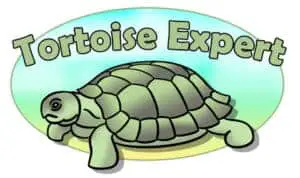Hatchling Failure Syndrome is a fatal condition characterized by a loss of appetite, increased level of sleep, a softer shell, and ultimately the death of a hatchling tortoise. It can be prevented by properly hydrating the tortoise and creating a humid environment where it can thrive.
As well as being a joy to keep, a tortoise is a long-term responsibility, so if you’re considering buying, or have recently bought a hatchling, you’re probably excited but also ready to do everything necessary to take care of it.
Sadly, not all hatchling tortoises are guarenteed a happy end. In some situations, tortoises will develop what’s known as “Hatchling Failure Syndrome”.
All too often it is too late to do anything about it, even with the best will in the world, and the tortoise will die. For an owner not only is this devastating in the short term, but it also leaves you wondering what happened and whether you did something wrong.
So, what is Hatchling Failure Syndrome, and how can you prevent it?
Why Does Hatchling Failure Syndrome Happen?
Hatchling Failure Syndrome makes the tortoise’s body “fail” as a result of dehydration. The little one stops eating, is no longer active/it sleeps more, or hides more than would be considered usual, and the shell starts getting softer than it should be, even for a tortoise as young as this.
The tortoise then gets increasingly lethargic, and eventually won’t even have the strength to open its eyes anymore. After one or two more weeks, the tortoise dies.
Why does this happen? Well, it’s worth saying right off the bat that there’s a lot of speculation and contention around this issue.
Some want to blame the new owner for not taking care of the tortoise, while others claim this condition, when it does happen, was bound to do so before the new owner even got the hatchling.
The most common reason is thought to be the use of an unsuitable habitat and care regime by breeders prior to selling the hatchling.
There are many breeders who sell hatchlings, and people who are prospective owners often don’t know what to look for when selecting both a breeder and a tortoise.
Very often, breeders do not maintain the right conditions for tortoises, and their tortoises may begin developing health problems that don’t become evident until some time after they have sold them on.
For example, soon after they have been hatched, such tortoises may be kept in a very dry environment, with no access to fresh water. In some cases, they may not even be provided with the basking light they require.
The breeder might keep them on an unsuitable substrate, among other errors in their living conditions. Not to mention that they might not even give them the right food.
In the end, the wrong diet can lead to metabolic bone disease, hence the soft shell that new owners often report after a while.
The trouble is that the first few weeks are crucial for ‘programming’ the metabolism and other biological processes, that if not established correctly at this early stage, will never work, period.
Breeders often think that the methods they use seem to work for them, so they don’t bother to provide the right care for their hatchlings. They won’t research anything related to tortoise care, and since the tortoises don’t show any sign of ill health, they assume everything is developing as per normal. As we know however, the problems arise later on.
Muddying the waters is the fact that first-time owners may also be the reason behind the issue, although this is less common. Since they will have never had to take care of a tortoise in the past, they may not be aware of the habitat feeding, and hydration a tortoise needs.
Again, I would hope this is exceptionally rare given that most people will naturally be inclined to do their research prior to taking on such a heavy responsibility,
In other situations, the cause for the issue is almost impossible to explain, and therefore is chalked up to simply being unknown. Many tortoise owners apparently purchase from a reputable breeder, yet still report the issue, even though they themselves give the tortoise the best care possible.
Can You Try to Prevent It?
Unfortunately, in some situations, there is nothing you can do about Hatchling Failure Syndrome. If the tortoise has reached an advanced stage into the syndrome (ie. the point at which symptoms become noticable) there may be no coming back.
However, that doesn’t mean there aren’t reports of happy ending too. Because it’s so hard to know if your hatchling is likely to suffer this fate or not, you must of course continue to give it the best level of care you can. With any luck you will either stop the condition in its tracks, or prevent it from occuring in the first place.
Above all else you should aim to keep your hatchling from getting dehydrated.
Make sure to regularly soak the little tortoise and also add an appropriately sized water bowl to the enclosure, to encourage drinking as much as possible. Another useful thing to do is to add a substrate that holds moisture so that their is a degree of humidity underfoot. Add as much substrate as necessary, so the tortoise has enough space to scrape or burrow. When they do so they will be exposed to greater moisture levels than they might otherwise do when burrowing.
This area should preferably be where the light bulbs or heat lamps don’t provide any light, as tortoises will choose a darker corner for this. You can also consider a hide box that has a damp cellulose sponge attached inside, or some damp sphagnum moss. Monitor the humidity regularly and make adjustments if the environment ever gets too dry.
Moreover, you can get a cheap pump sprayer or spray bottle to moisten the substrate in the enclosure to maintain the humidity. If you have low indoor humidity, this is especially important.
Even if you keep the tortoise outdoors for the most part, you still need to make sure it has enough water available and that you soak it regularly.
Why Is It Important to Be Educated on this Matter?
Hatchling Failure Syndrome is a serious issue that should be talked about more in the world of tortoise husbandry. It causes tortoises to suffer unecessarily, and it can lead to their extremely premature death.
Being educated on this matter will make more people aware of the dangers of not getting care right in the very early stages of life, and if fewer tortoises suffer and die as a result, that can only be a good thing.
Armed with the right knowledge you will therefore know how to take care of your pet to help prevent such a terrible fate from happening. It will also help inform what you should do if you notice any unusual or worrying signs.
Not to mention that this can help bring awareness of the way breeders operate and may help stop such actions from continuing. It also highlights the importance of only buying from reputable and experienced breeders.
Final Thoughts
Hatchling Failure Syndrome is something that cannot be ignored if you wish tortoises, both your own and others bred in captivity, to live happily and not be subject to suffering or even end up dying. Make sure you get your tortoise from a trusted breeder and that you prepare the right environment for the reptile to thrive in.


